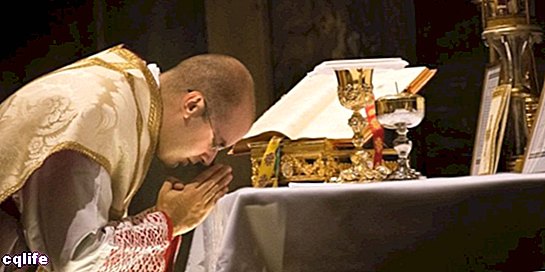We explain what a rite is, its origin, function and the characteristics of each type of rite. Also, how it differs from a ritual.

What is a rite?
A rite (sometimes called a ritual) is a ceremony that is performed in a rigid and repeated way, that is, always in the same way although in different years or periods of time, and that has commemorative, religious, symbolic or socio-political purposes. Generally, rites are inscribed (and dictated by) a specific church or religious tradition.
The rites usually consist of the expression of a symbolic or narrative content, usually of mythological or religious origin. As dictated by the tradition, can be carried out through different ritual actions, within the framework of festivities, celebrations or specific days, and often at the hands of priests or people invested with certain social or mystical authority.
The anthropologist French Émile Durkheim (1858-1917) defined them as “practice related to sacred things”, since they usually serve to strengthen the society certain taboos or certain ideas of the transcendent and the pure. In fact, the rites are not necessarily linked to a religious practice, but can be part of a social and cultural tradition, but their ultimate meaning is always inscribed in a vision of society and of society. existence.
Types of rite
Rites can be classified, according to the American anthropologist Ronald L. Grimes (1943-), into six categories:
- Of ritualization. They are those that link the biological existence of the individual with the environment, in such a way that they facilitate the connection between individuals and establish the rules of play for the existence in community. They are not exclusive to Humans: animals have mating rites, for example, which are carried out to convince the female to allow intercourse and intercourse. reproduction.
- Of decorum. They are those who define the protocol between two human individuals, establishing the "correct" or "respectful" way of interrelation, since they regulate or shape the interaction. This includes linguistic, corporal and spatial formulas, such as shaking hands when meeting someone, or greeting with a kiss on the cheek when you have confidence with someone.
- Of ceremony. Ceremonies are large-scale events linked to organizations from can, like churches or institutions policies, in which a Leader as officiant. They therefore encompass a group of people and serve to strengthen common ties or lead them towards the same transcendent objective.
- Of magic. As the name suggests, these are pragmatic rites with supposedly useful ends, that is, carried out in the hope of satisfying a desire. It is in these types of rites that we think of when we see witchcraft or divination ceremonies, or when we pray to God to save us from danger.
- Celebratory. The celebrations are rites that openly or discreetly break with the formality of the ceremonies, and whose purpose is the celebration, the connection between the assistants and the construction of a common sense of existence. Carnivals, birthdays, end of the year parties, are examples of this.
- Of liturgy. The most complex of rites occur when people feel the urge to connect with the divine, that is, to satisfy a cosmic need. This has to do with spiritual consciousness, that is, it has no practical or immediate end, but simply the sense of connection with something greater, which gives life meaning.
Difference between rite and ritual
Although in certain areas, generally informal or colloquial, "rite" and "ritual" are often used synonymously, they do not really mean the same thing.
In a strict sense, the term "rite" comes from the Latin ritus with which the Romans named their religious ceremonies, it refers to the traditions that are rigidly reiterated in a symbolic or religious system. For its part, "ritual" is everything related to the rite, and the word comes from Latin ritualis, translatable as "relating to religious activities."
This distinction can be considered as follows: each of the ceremonies that a cultural tradition contemplates are rites, and instead the specific actions that are carried out to fulfill them are rituals. That is to say: the rites are the path dictated by tradition, and the rituals are the steps taken to travel it.
